BEST Dill Pickle Relish
This post may contain affiliate links. See my disclosure policy.
An easy, wonderfully versatile and utterly deeeeelicious homemade dill pickle relish recipe! Canning instructions are included so you can enjoy this relish all year long!
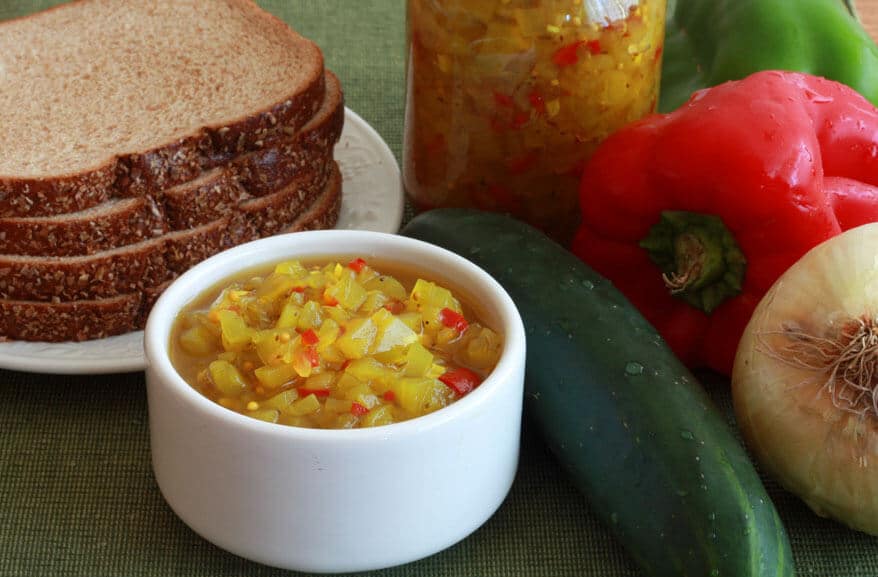
It’s relish like this that makes eating a sandwich or hot dog just that much better. It also adds a wonderful dimension to your pasta and potato salads. Last Summer I posted my recipe for Sweet Pickle Relish and here is the more savory version with a more pronounced dill flavor. It’s so easy to make and comes with instructions for canning so you can enjoy it all the year long.
Pickle Relish Recipe
Let’s get started!
We’re going to use regular cucumbers. They’re much cheaper than English cucumbers (the ones that come shrink-wrapped) or pickling cucumbers and taste exactly the same. I prefer to peel them since the peel is fairly tough. We’re also going to remove the seeds.
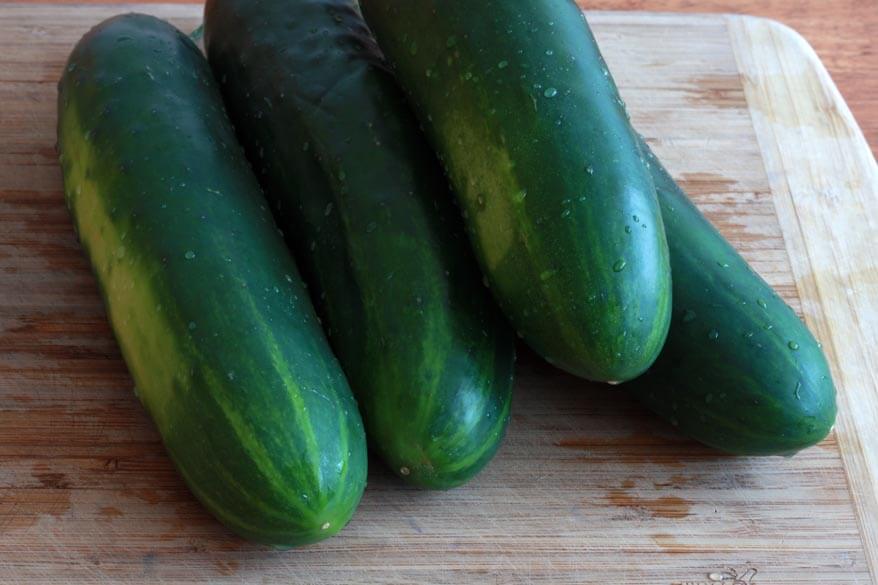
So peel the cucumbers and thinly slice them lengthwise. Slice them into strips, discarding the inner strip of seeds. Then very finely dice the cucumbers.
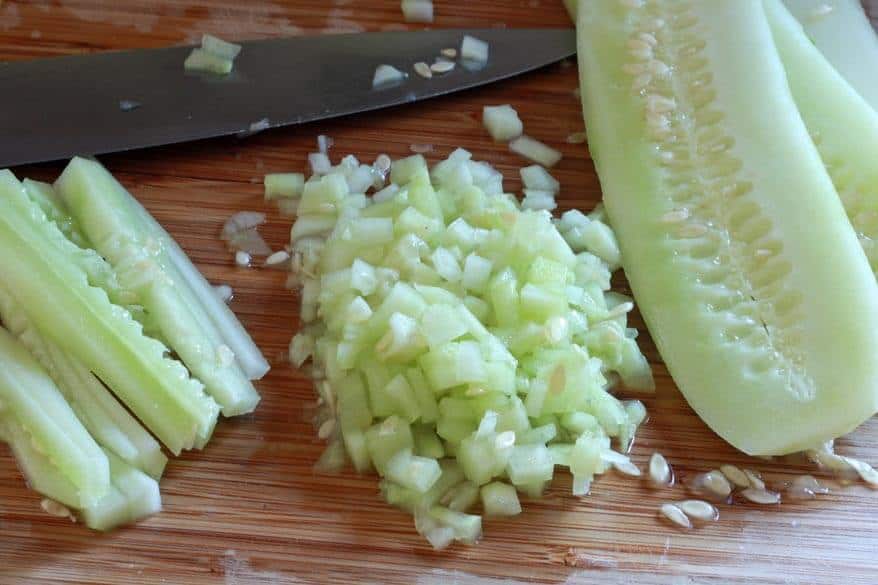
Very finely dice the onions, garlic and red bell pepper. You can use a food processor, just don’t let the onions and bell pepper get mushy. I prefer to just do it by hand.
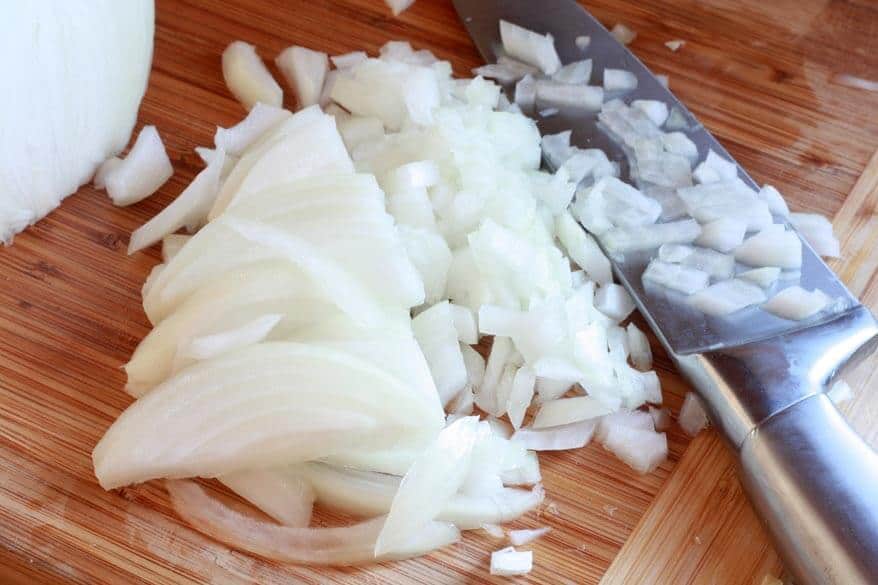
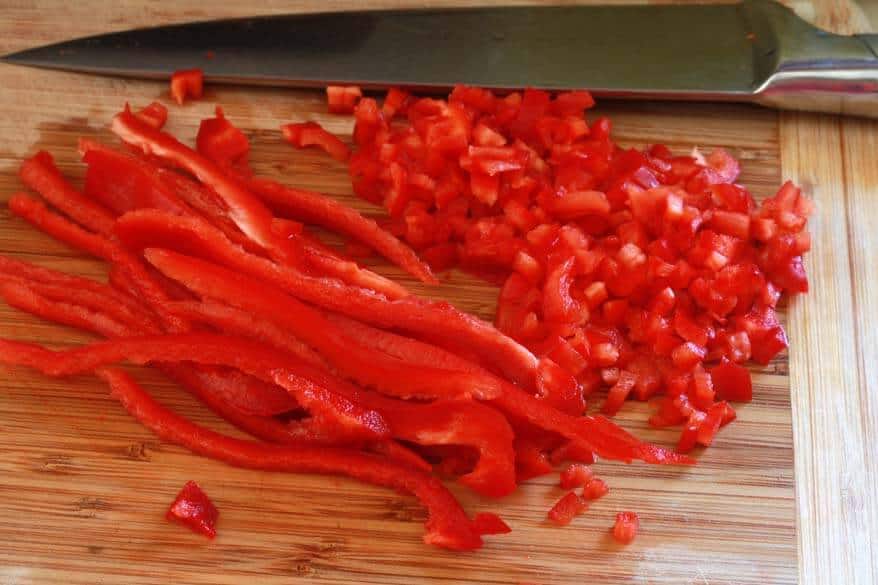
Note: There are no green bell peppers shown in the pictures and they weren’t added to this particular batch, but they belong in it. Okay, now that that’s clear, let’s move on.
Place the diced vegetables in a large bowl along with the salt. Cover with water and let it sit for at least 6 hours or overnight.
(Ignore the fact that some of the cucumber peels are on. The second batch I made I peeled the cucumbers and the result was better.)
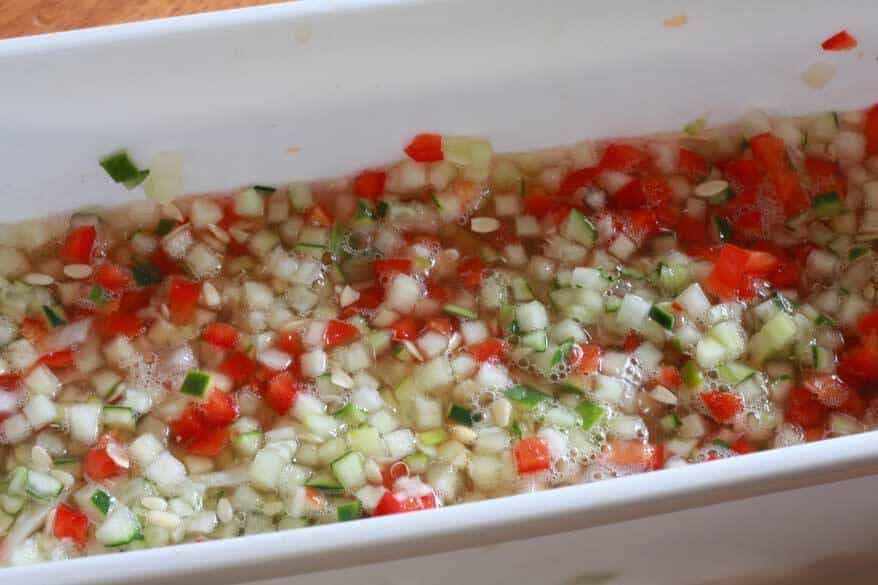
Put the sugar, vinegar and spices in a large stock pot and bring it to a boil. Reduce the heat to a low boil and simmer for 5 minutes.
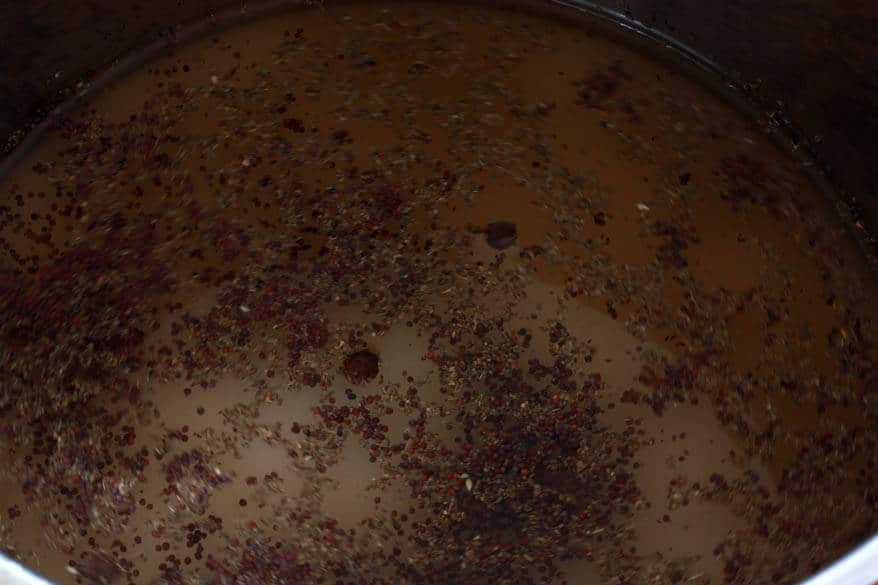
Drain the cucumber mixture in a colander, thoroughly rinse, and drain again.
Add the mixture to the stock pot. Return to a boil, reduce the heat to medium-low, and simmer, uncovered, for 10 minutes. Discard the bay leaves.
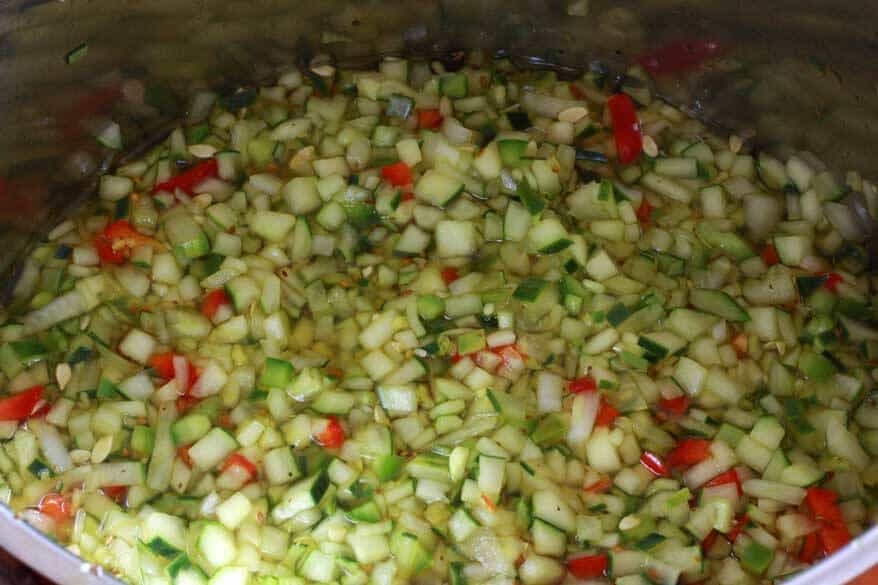
Ladle the hot relish into the hot sterilized jars, leaving 1/4 inch of headspace. Wipe the rims of the jars clean and seal tightly with the lids. Process the jars in a boiling water bath for 10 minutes.
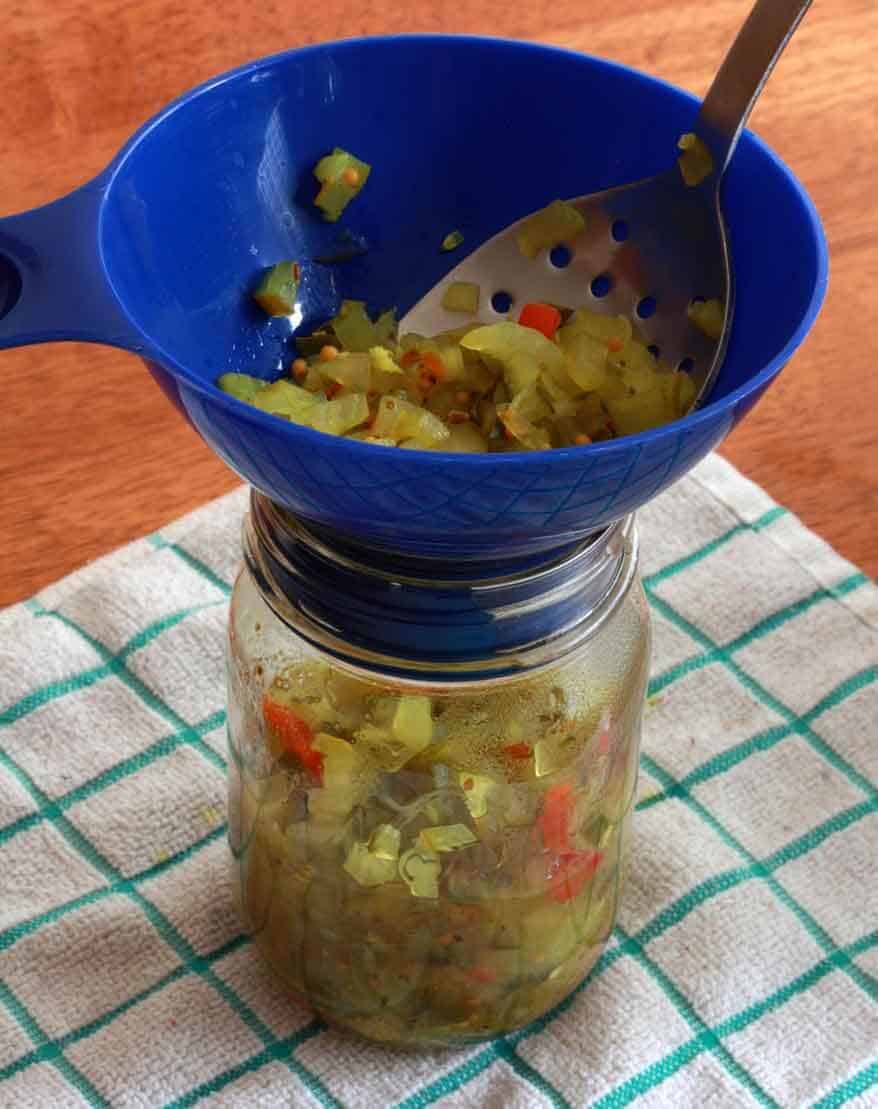
Ah, the masterpiece is done!
Best eaten at least a week later after the flavors have had time to meld and the vinegar mellows out a bit. In addition, the relish needs to sit to give it time to absorb some of the liquid and to thicken.
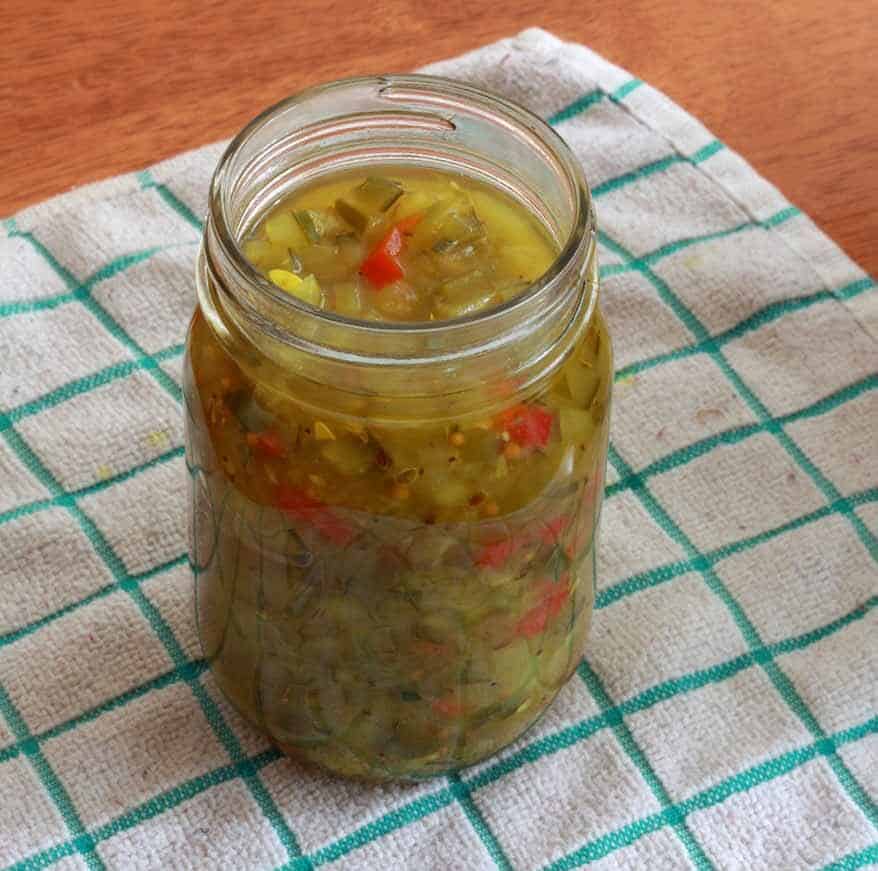
It’s so satisfying to see the end result of your labors – and you can enjoy this relish all the year long!
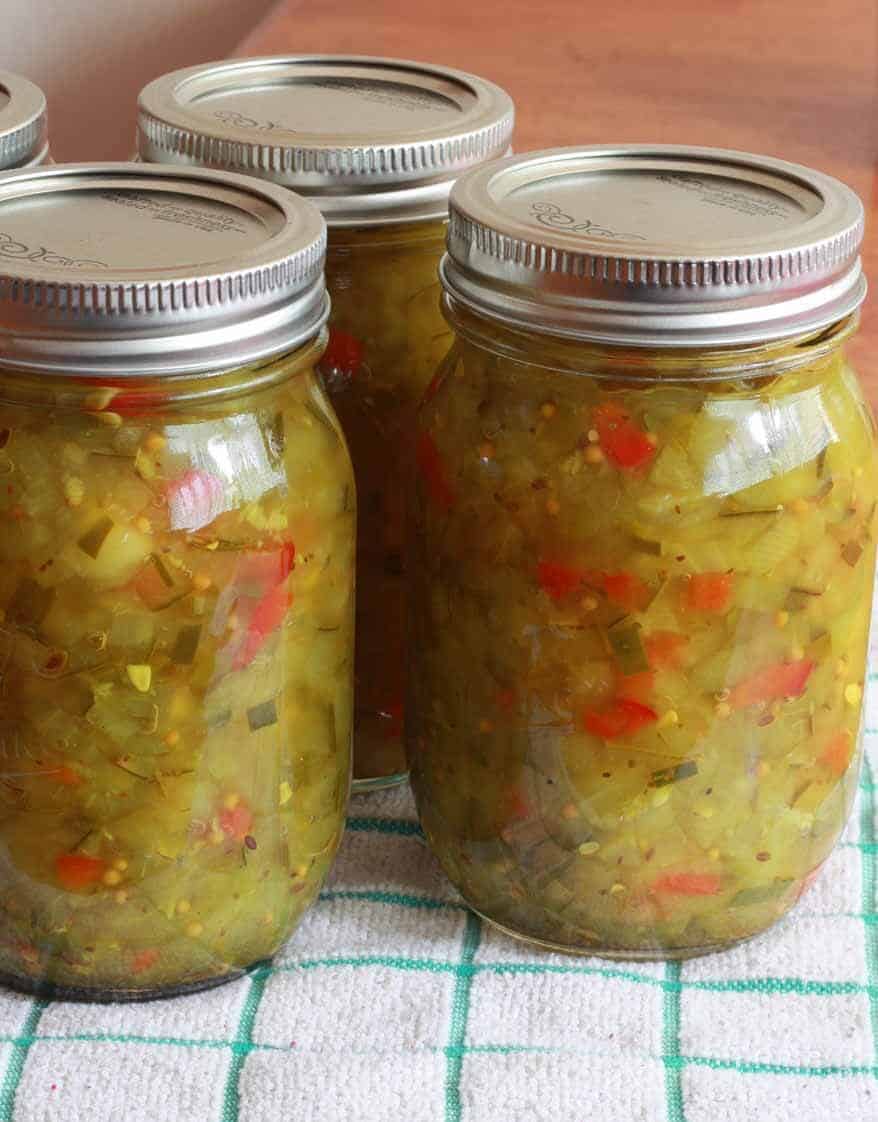
For more pickled vegetable recipes be sure to try my:
- Giardiniera
- Corn Relish
- Sweet Pickle Relish
- Branston Pickle
- Pickled Red Onions
- Pickled Pepperoncini Peppers
- Sweet Pepper and Onion Relish
- English Pickled Onions
- Pickled Banana Peppers
- Pickled Okra
- Pickled Green Beans
- Pickled Asparagus
- Pickled Turnips
- Pickled Peppers
- Pickled Beets
Save This Recipe
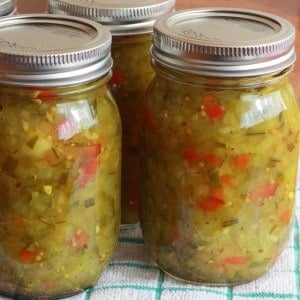
BEST Dill Pickle Relish
Equipment
Ingredients
- 2½ lbs cucumbers (weighed prior to peeling and seeding),peeled, center row of seeds removed, and finely diced
- 1 large yellow onion ,finely diced
- 1 small red bell pepper ,finely diced
- 1 small green bell pepper ,finely diced
- 3 cloves garlic ,finely minced
- ¼ cup kosher or pickling salt (neither of these have additives which is important to avoid when canning)
- 3 cups white vinegar
- 1/2 cup sugar (optional or use less according to taste)
- 2 teaspoons dill seeds
- 1 tablespoon yellow mustard seeds
- 2 teaspoons celery seeds
- 1/2 teaspoon turmeric
- 2 bay leaves
Instructions
- Place the diced cucumbers, onion, bell pepper, and garlic in a large mixing bowl. Combine with the salt and pour water over the mixture until covered. Let sit for at least 6 hours or overnight.Drain the cucumber mixture in a colander, rinse thoroughly with water, and drain again.
- In a large stock pot, add the sugar, vinegar, and spices and bring to a boil. Reduce the heat to medium-low and simmer for 5 minutes. Add the drained cucumber mixture and return to a boil. Reduce the heat to medium-low and simmer, uncovered, for 10 minutes. Discard the bay leaves.
- Ladle the hot relish into hot sterile jars, leaving ¼ inch of headspace. Wipe the rims of the jars clean and seal tightly with the lids.Process the jars in a boiling water bath for 10 minutes.
- Sealed jars will store in a cool, dark place for a year. If the seal is broken, the relish will keep in the fridge for at least a month. Makes roughly 4 pints (you can use pint-sized or half pint jars). Best eaten at least a week later after the flavors have had time to meld and the vinegar mellows out a bit. In addition, the relish needs to sit to give it time to absorb some of the liquid and to thicken.
Nutrition
Originally published on The Daring Gourmet February 15, 2014



















Is it a typo to let the mixture sit in water with salt? If we are trying to extract as much water from the cucumber before canning, it seems counterproductive if it’s sitting in salt water. What did I miss?
Hi Dill, I know it sounds counterintuitive, doesn’t it? :) Salt water draws water out of vegetables through osmosis. The salt creates a higher concentration outside the vegetable cells than inside. This causes water to move from an area of lower salt concentration (inside the cells) to an area of higher concentration (outside the cells), resulting in the vegetable releasing water.
This pickle relish is super, just what I was looking for!
Terrific, thank you so much Tori!
This is a wonderful recipe! I made it using pint jars. If I decided to do 1/2 pint jars for the next batch, is the water bath processing time the same as the pint? I am very much a beginner with canning. Thanks!
Thank you, Kathy, I’m so glad you enjoyed it! Yes, same processing time for 1/2 pint.
Can you give a rough estimate of how many cups of cupped veg this gives before the first step?
I wanted to use some jalapeños to add a little kick.
Hi Elizabeth, I haven’t measured the vegetables out in cups so I’m not sure. A very rough estimate: this makes about 4 pints (or 8 cups) of relish and that’s including 3 cups of vinegar, 1/2 cup sugar and 1/4 cup salt. So subtracting those three ingredients (roughly 3 1/2 cups), that would leave you with somewhere in the ballpark of 4 1/2 cups of chopped vegetables.
Hey there. I’m just wondering if you could use dill weed in place of dill seed. Would that work?
Hi Hannah, yes you can, the flavor profile will just be a little different.
I am in process of making the relish. Smells and looks divine. Question. After rinsing the vegetables to remove salt brine, do I squeeze/press out the excess liquid, or simply let it drip through the colander with no assistance. I am asking for the next time I make this recipe (in a couple of weeks). Currently, I gave the vegetables a little squeeze and there is definitely liquid removed. Many thanks for all your great recipes and tips along the way.
Hi Sandy, yes, draining assumes that excess liquid is removed. How much is left in the vegetables also depends on the diameter of the colander (how deep versus shallowly the vegetables are stacked), so giving them a squeeze just to make sure they’re drained is good step to take. Happy pickling and I hope you enjoy the relish!
First time making it and I agree with the other reviews, it’s the best dill pickle relish I’ve had.
Fantastic, thank you so much Holly!
Fabulous relish! Definitely adding this to my annual pickling rotation.
Fantastic, thank you so much Sandra!
Do you leave the soaking vegetables out or refrigerate them? Thanks!
Hi Jen, you can just leave them out at room temp.